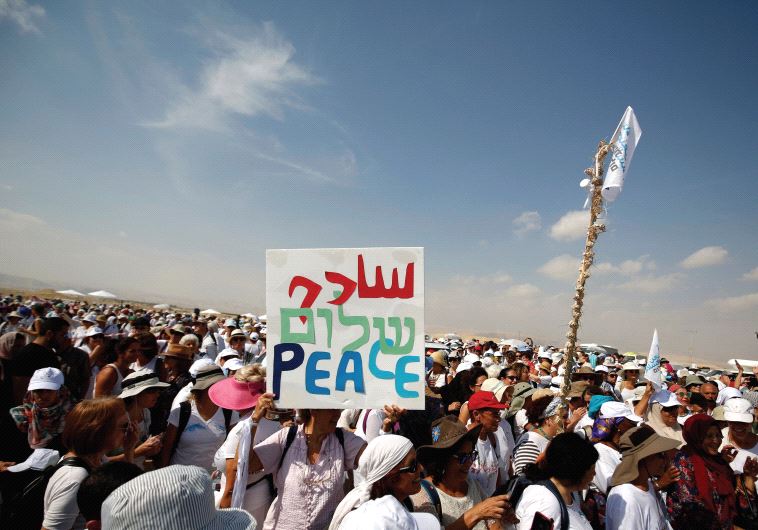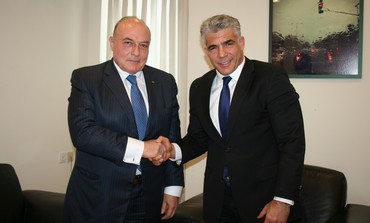Last week in this column I wrote that perhaps the only way to save the two-state solution is for the United States to recognize the State of Palestine. The logic being since the world recognizes one of the two states – the State of Israel, even though Israel has no defined permanent borders – the same could be done regarding Palestine.
If the US recognized Palestine, most of the world would follow and then the Israeli-Palestinian issue and the possibility of two states would be back on the table. The two states would then have to negotiate their border and the nature of relations between them.
As we know, Prime Minister Bennett keeps reassuring the public that on his watch there will be no creation of a Palestinian state and it is very unlikely that the Biden administration will recognize Palestine and force Israel to negotiate with a Palestinian state. As time passes the viability of the two-state solution is rapidly disappearing.
Gideon Levy wrote on Sunday in Haaretz that Bennett’s assertion that there will not be a Palestinian state is a full and final recognition that the two-state solution is officially dead and that the one-state reality that we have been living with for decades is in fact not a solution but is in reality a form of apartheid. It is not a one-state solution because the non-democratic reality for millions of Palestinians living under Israel’s direct and indirect control devoid of national, political and human rights cannot be a solution.
The Palestinians will continue to object to the Israeli occupation and control and will always oppose the nondemocratic military rule over their lives. Even today, Israel cannot claim that it is the democratic nation-state of the Jewish people because more than 50% of the people living between the [Jordan] River and the [Mediterranean] Sea are Palestinians and the majority of them do not live in a democracy.
The PA is not a state-in-the-making, which the supporters of Oslo (myself included) had hoped. They hoped it would be emerging from a five-year interim period into a fully grown independent Palestinian state. The interim period was supposed to end in 1999. That did not happen and the PA, according to a majority of Palestinians, does not serve the national interests of the Palestinian people. In the eyes of what seems to be most of the Palestinians, the PA has become a sub-contractor of Israeli interests.
The young generation of the Palestinian citizens of Israel who make up 21% of the population is not content to accept their inferior status in Israel. They are fighting for their equal rights and believe that equality can only be achieved when Israel will define itself as the state of all of its citizens. Many of these young Palestinian Israelis are at the forefront of the call for one democratic state from the River to the Sea.
WHILE ISRAELI supporters of one democratic state from the River to the Sea are on the fringes of Israeli society, the reality is that as the non-viability of a two-state solution becomes increasingly clear, we will all have to become a lot more serious in the collective search for other solutions. Many of the supporters of a one-state solution that I have spoken with have no consciousness of the need to answer basic collective national needs of the two peoples living on the land.
When asked, many Palestinian one-state supporters describe their one-state solution as a Palestinian state, just as many Israeli Jewish one-state supporters describe their one state as a Jewish state. This is clearly not a solution.
Both Palestinians and Israeli Jews want to ensure their collective security. They all want to have the ability to make autonomous decisions about their identity, culture, and education. They want to preserve and foster their religious and cultural heritage and give public voice to their history and their national and religious connection to the land between the River and the Sea.
I don’t have the answers on how to provide the two peoples of this land with what they desire. It is clear there are two peoples living on this land and each claims the entire territory as belonging only to themselves.
Their histories and narratives are linked to the great struggles and sacrifices that they have paid to make their claims and to advance their national collective interests. For many years, both were engaged in mutual non-recognition and many continue to be steadfast in their denial of the rights and even existence of the other people.
There is no symmetry in the conflict – there is the strong side and the weak side. There is the occupied and the occupier. There is symmetry though in the ability of both peoples to deny the other side peace and security. That is why it is essential to begin a process, not of negotiations, but of searching for new ideas, paradigms and constructs of how these two people can find a way to share this land and provide them each with what they require to have the physical security and security of identity to reach the point of genuine mutual recognition.
Between the River and the Sea there are 50% Jewish Israelis and 50% Palestinian Arabs. Most of both peoples feel a connection to all parts of this Land of Israel-Land of Palestine. Those who continue to deny the existence and rights of the other side are living with their heads buried deep in the sand. We need to get beyond the arguments of historic rights and face the crucial questions regarding our future.
How is it possible to guarantee the abilities of both peoples to express their separate identities as collectives? How is it possible to enable people to live in communities of their choice with educational systems that reflect their identities and their values? How is it possible to create opportunities for people to live with a sense of equality under legal and government systems that protect and defend their human and national rights?
Is self-determination possible without full sovereignty? Can there be areas of separate sovereignty and other areas of shared sovereignty? These questions and many more need to be on the table and the search for answers must be done with both Israeli Jews and Palestinian Arabs at the table, and there should be as many tables engaged in this process as possible.
The sooner, the better.


